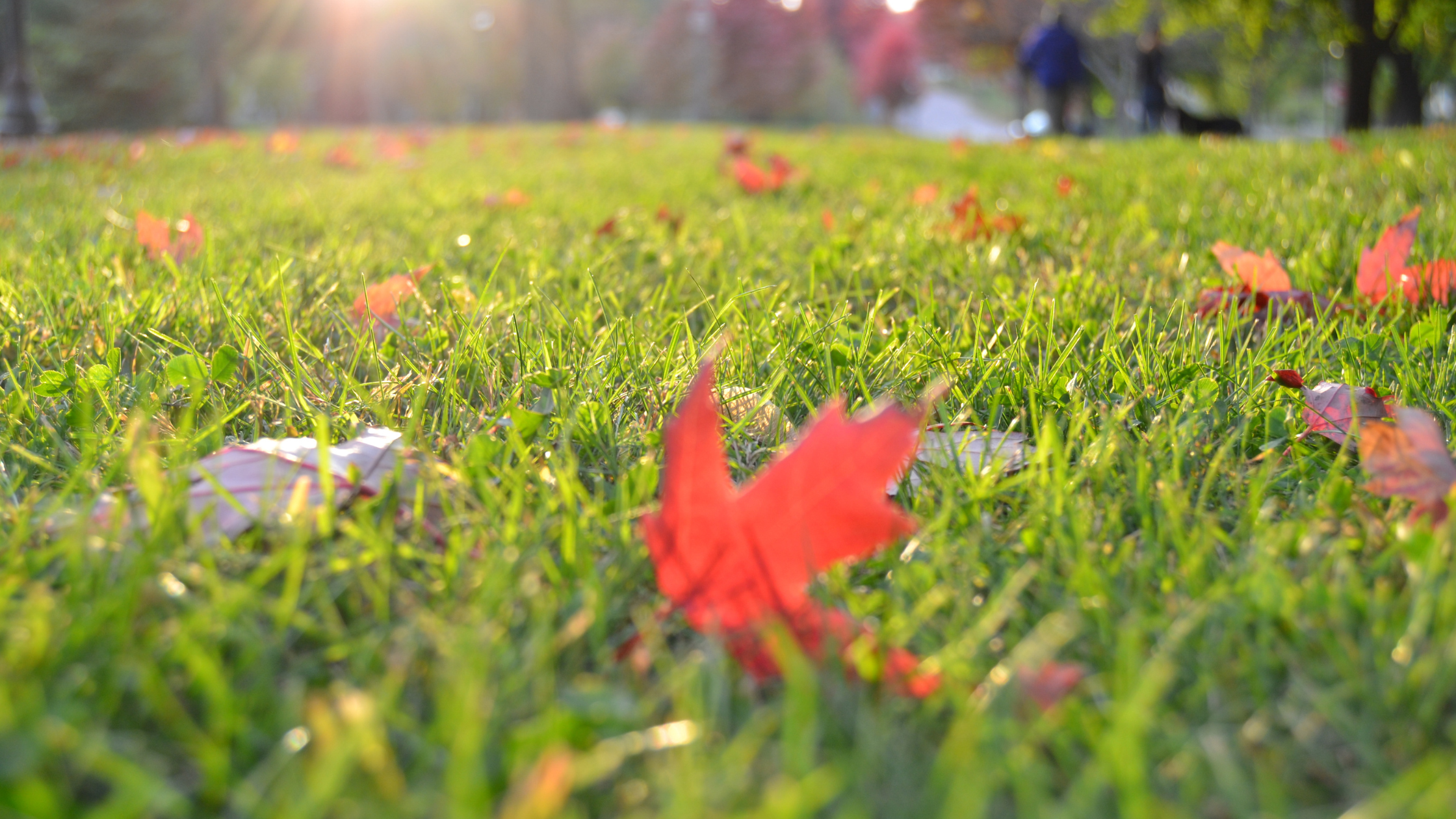Fall is a critical season for lawn care, offering a unique opportunity to prepare your lawn for the challenges of winter and ensure it emerges healthy and vibrant next spring. At Mainely Grass, we know that taking the right steps now can make all the difference. Follow these fall lawn care tips to keep your lawn in optimal condition, from mowing and watering to aeration and fertilization.
Mowing: Adjust Your Height for Seasonal Success
New England lawns are made up of cool-season grasses that thrive in temperatures between 60-75 degrees, making fall an ideal growing period. Keep mowing as long as your grass remains actively growing, typically until daytime temperatures consistently fall below 50 degrees — usually around November. As growth slows, gradually lower your mower height by about half an inch for the final few cuts, aiming for a length of 2 to 2.5 inches. This height helps prevent snow mold and encourages leaves to blow across the turf rather than getting snagged.
Watering: Maintain Moisture Levels
Even in the fall, your lawn needs consistent moisture to stay healthy. While natural rainfall may be sufficient, monitor your lawn and provide supplemental watering if rainfall is scarce. Aim to water deeply but less frequently, allowing the soil to absorb moisture and encouraging deep root growth. Early morning is the best time to water, minimizing evaporation and reducing the risk of fungal diseases.
Aeration: Relieve Compaction and Improve Airflow
Fall is the perfect time to aerate your lawn, especially if it has experienced heavy foot traffic or compaction over the summer. Aeration involves perforating the soil with small holes to allow air, water, and nutrients to penetrate deep into the root zone. This process relieves soil compaction, promotes root growth, and enhances overall lawn health. Consider aerating your lawn in early to mid-fall to give it ample time to recover and strengthen before winter.
A core aeration in process.
Overseeding: Fill in Bare Spots and Thicken the Turf
Overseeding involves spreading grass seed over your existing lawn to fill in bare spots, thicken the turf, and improve its overall resilience. Fall is an ideal time for overseeding because the cooler temperatures and increased moisture create optimal conditions for seed germination. Choose a high-quality grass seed and overseed immediately after aeration for the best results. Remember to follow proper aftercare as the new grass is established.
Fertilization: Strengthen Your Lawn with a Potassium Boost
Fall fertilization is essential for building a strong foundation for your lawn as it heads into winter. Focus on using a specialized Winterizer fertilizer with higher potassium content. Potassium, an essential nutrient, helps strengthen the grass’s cell walls, making it more resistant to cold, disease, and drought.
Potassium uptake in turf (source GCMOnline).
Raking Leaves: Keep Your Lawn Clear and Healthy
Fallen leaves can smother your lawn, blocking sunlight and trapping moisture, which can lead to fungal diseases and other problems. Regularly rake or mulch the leaves to keep your lawn clear. If you choose to mulch, use a mulching mower to shred the leaves into small pieces that can decompose and add valuable nutrients back into the soil. However, avoid letting a thick layer of leaves build up, as this can suffocate the grass.
By following these fall lawn care tips — including proper mowing, watering, aeration, overseeding, fertilization, and leaf management — you can ensure that your lawn remains healthy, vibrant, and resilient!


